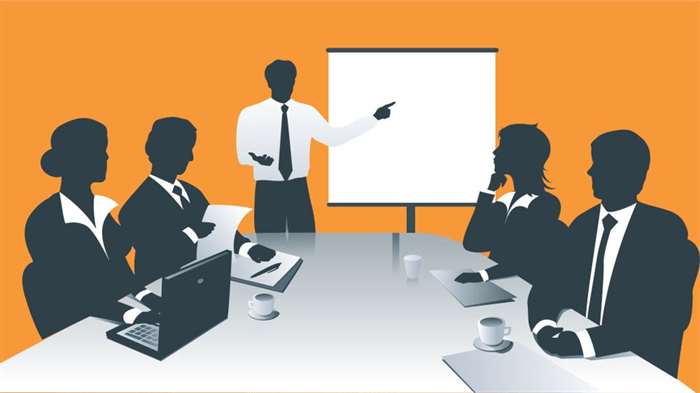The skills of a good facilitator include maintaining an open mind and not criticizing ideas and suggestions offered by group members. The responsibilities of a facilitator are to understand that conflict among group members is natural and, as long as it’s expressed politely, does not need to be suppressed. Conflict should be expected and dealt with constructively.
- Other meetings it’s simply about passing on policy changes, etc.
- I have been a practitioner for over 30 years and have learnt these skills the hard way .
- A facilitator should be skilled in asking questions that are open-ended and encourage discussion.
- This ensures that all team members are using the same words to mean the same thing.
- They get a group interacting with one another and often include games that focus on getting to know names.
As the chief operating officer and partner at Shackleton Group, as well as a former U.S. Marine officer and aviator, Mike Westman brings considerable experience to his role, honing progressively responsible leadership and management skills from both. This rule can be used to encourage participants to come up with big ideas, without considering the practical constraints of day-to-day life. These blue sky ideas are often very inspirational and a great anchor point for the group to come up with similar, more feasible ideas.
Methods of facilitation
For example, if one or two members are resistant, you may not want to begin with activities that require a high degree of support and trust. If the participants are not comfortable with physical contact, you may need to move gradually into activities that require them to physically support others. If they seem to be disinterested, increase the challenge of an activity to spark their enthusiasm. If you find that they are not planning or listening, you might try some introductory communication exercises. All teambuilding programs should be designed to meet the needs and objectives of the group.

The International Association of Facilitators has a calendar of live and online events you can attend. Being aware of our own responses is key to keeping our cool in such situations and, thereby, staying helpful to the group. Self-awareness also means creating your own set of principles, values and skills that are important to your own facilitation practice. Facilitation is about believing the group has the tools and skills needed to solve its own problems. Trusting the group can be difficult, especially if you are also an expert in the content, or perhaps a manager, and feel you might have some answers yourself.
“Tolerate and teach, don’t shame and blame”
Although used in combination, these elements can have an exponential effect on the outcome of the session and the individual and collective experience of the group. The crafting process involves considering many elements, from the overall design of the meeting or workshop to the pacing and cadence. Effective meetings are seen as learning experiences, not just as items on an agenda. Furthermore, the design should not be confined to a single approach or methodology. As facilitators, we should remain method agnostic to best serve our participants’ needs and circumstances.
It shows that you care enough about your purpose and the outcomes you want to achieve that you deliberately design the space and process in which these outcomes can be realized within established time limits. Sadly, we often come across instances where there isn’t enough deliberation or care, sometimes due to the demands and pressures of the organization. A crafted approach requires understanding that everything we do in our professional lives – from our work to our collaborations to our culture – is designed in some way. As such, leaders need to see themselves as the designers of the experiences their teams and coworkers engage in. Additionally, inclusivity goes beyond the mere presence of individuals.
What are the benefits of having ground rules for meetings?
Anything that does not directly serve the purpose can act as a block, preventing participants or team members from understanding the direction and how they can contribute to reaching the goal. This process also requires careful attention to the amount of work and dialogue expected from the participants. These considerations are vital for crafting effective experiences. This patience also nurtures an internal focus in facilitators. Instead of focusing only on external progression, excellent facilitators embrace pauses and allow for thoughtful consideration. This fosters better understanding and reduces confusion among the participants.

Discuss how you are using the ground rules and how to improve. Take five minutes at the end of each team meeting to discuss where you used the ground rules well and where you can improve. If you find yourself having these conversations outside the team, you’re not building a better team. Develop a team mindset that’s congruent with the ground rules. The behaviors your team uses are driven by the mindset you operate from.
Recommended Articles
Which makes this rule so powerful, because it’s easy to point out and bring into discussions. This list is good, but often not enough to achieve our goals. We recommend also using Liberating Structures, which are a selection of 33 microstructures for facilitating meetings and conversations. They were curated by Henri Lipmanowicz and Keith https://www.globalcloudteam.com/ McCandless, experts in the field. The world is changing rapidly, and it’s hard to find universal specialists who have all the necessary competencies to create the product you want. The importance of having teams with diverse specialties and experience is growing, and Agile has emerged as a way to help bring those varied voices together.
As a facilitator, you should have a good eye for spotting when the group’s attention level as a whole is getting critically low. Life competencies are clusters of related skills and abilities that enable a person to act effectively in a real-life situation. They are more complex than the practicalities of managing a meeting or a group of people, but the good news is they can be picked up and practiced in all sorts of situations. You might go further by creating a needs assessment to understand what the different stakeholders of an event might want in order to come up with a solution that meets your client’s needs. A hallmark of effective facilitation is clarity and purpose.
Adaptive: Dancing with Change in Facilitation
Be critical in this stage of the design process so that your facilitation does not suffer from being overwhelmed during the meeting or workshop. Whether it’s a meeting or a training session, someone has to shape and guide the process of working together so that you meet your goals and accomplish what you’ve set out to do. While a group of people might set the agenda and figure out the goals, one person needs to concentrate on how you are going to move through your agenda and meet those goals effectively. Agree that everyone is responsible for helping each other use the ground rules. Teams are too complex to expect that the formal leader alone can identify every time a team member is acting at odds with a ground rule.

So you can easily see why the average work meeting is ineffective. Meetings are designed to impart information to groups of people. Crisp & comprehensive,I found this very, very useful as I embark on a training for academicians who now need to shift from lecture mode to facilitation agile team facilitation basic rules mode. You’ve clearly articulated so many of the foundational pieces of preparing and facilitating a group. Clearly and sequentially explain the steps participants will take. Ultimately, supporting the group in making actual, effective progress toward its goals.
Design your next workshop with SessionLab
So we all know before the meeting starts that topic A will be 5 minutes, but topic B will be 20 minutes. If you have a large group or a lot of topics to cover, you may find your meeting stretches well over an hour. Anything over 30 minutes is risking boredom, cell-phone checking, and side-conversations. If it’s a good company that they believe in, they’ll accept the decision a little better once they fully understand. Then have a dedicated Q and A portion of the meeting at the end, with a set end time; that way it doesn’t just turn into an extended grouse-fest or argument that never ends. To chair a difficult meeting, I think it makes a big difference to let the team know ahead of time what is going to be discussed.
